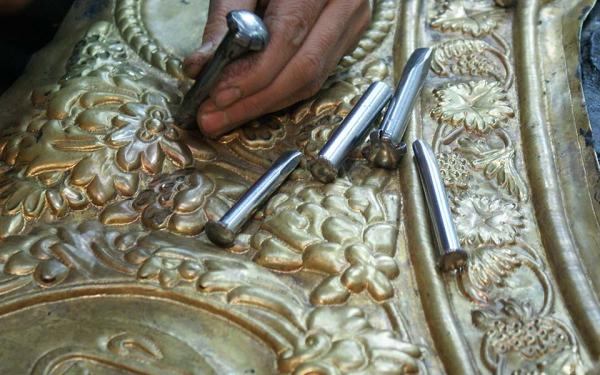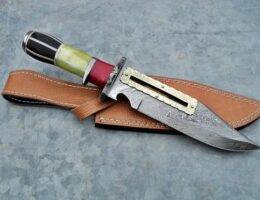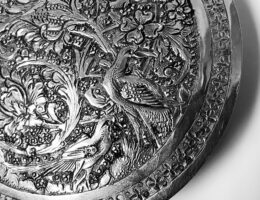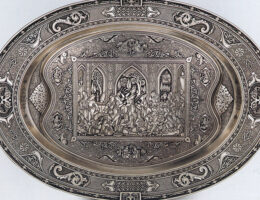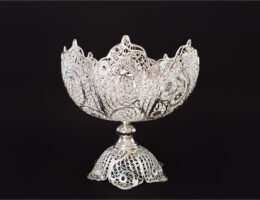IRAN ART EXHIBITION: “EMBOSS WORKING” THE ART OF ENGRAVING PATTERNS ON METAL
Emboss working refers to the work of art which is conducted using a pen and we can also say that the art of printing on a fabric … Ghalamkari is a Persian word used in Hindi language which consists of the two words Ghalam and Kari and is synonymous with chintz-making.
Art of emboss working This art continued its glory days, belonging to the period of Shah Abbas Safavid, which coincides with the 11th lunar century and continued until the middle of the Qajar era when it was customary to design men’s and women’s clothing using a pen and gold emboss working is one of the famous methods of this profession.
HISTORY OF EMBOSS WORKING
Art of emboss working It has no definite history. The most complete and comprehensive explanation for it is the same as that Philips Ackerman explained in full in the third volume of his book Pope. The book concluded that a great similarity was found related to carpet, emboss working, tiles, and engraving on wood to stucco measurement.
Finally, the designers of emboss working, tiles, carpets, woodcarving, stucco using the motifs used in these few industries and obtained new motifs by combining them. Considering the remnants of these arts, it can be decided that the history of emboss working is older than carpet weaving due to its common nature, construction and execution, and finally it has left its effect on stucco and wood.
The art of emboss working among all available handicrafts has great cultural and social value and is also of great economic importance.
EMBOSS WORKING FIBER AND COLOR
In the art of emboss working, the fabrics made of cotton and sometimes silk, cotton, linen, canvas and silk are used. The reason for selecting this fabric is due to the high acceptance of color compared to wool and the design of patterns in such fibers. The fabrics have high stability and efficiency, thus there are six types of fabrics which are important for emboss working including: Canvas, silk, fustian, calico, linen of foreign texture, and Haji Akbari tiffany.
In the art of emboss working, like other arts, it has its own methods among which we can mention red, gold or purple jigranats. Currently, in the art of emboss working, the wooden molds with reliefs are used and it can be said that one of the main pillars of emboss working is making and using wooden molds.
EMBOSS WORKING PRODUCTS
In the present era, production Emboss working in Isfahan takes place in the production workshops of Khorzooq and also the center of Isfahan, where they moved to their birthplace full of aqueduct water and large and vast lands and due to the presence of professors and famous people in the field. Emboss worked- tablecloths in Isfahan and a very high number of emboss working workshops we can say that about 70% of production and purchase Emboss worked tablecloths related to Isfahan, which was the capital of Iran during the Safavid period and is now one of the major and largest producers of emboss working tablecloths.
Emboss worked tablecloths in Isfahan are produced and exported to all over the world using completely traditional methods, tools, natural colors and pure linen fabrics, and are prepared as souvenirs and gifts from Isfahan.
TYPES OF SEAL DESIGNS
IRAN ART EXHIBITION: The difference which is significant in original emboss working and chintz-making, tourists and people who travel to Isfahan Emboss worked tablecloths are known for the wooden molds which are engraved on the fabric, but in fact, its name is chintz-making and it is mistakenly called emboss working. In fact, emboss working is the same art used by pen for drawing on fabrics.
Wooden molds (seals) which are used for emboss-worked tablecloth motifs have dark colors at the beginning of the work and then have blue, yellow, red and jujube colors.
Designs and motifs of molds (seals) including: Geometric shapes of flowers and leaves, hunting motifs, paisley, Achaemenid inscriptions, Islamic patterns, miniature patterns, patterns of domestic and wild animals, which are designed according to the creativity and taste of the craftsman on the tablecloths.
WHYEMBOSS WORKED- TABLECLOTH?
Emboss worked- tablecloths are designed due to their special designs and different quality to adorn Iranian houses and are designed in three models: square, circle, rectangle, as well as the request of the applicant for the emboss worked- tablecloth.
USE OF EMBOSS WORKING
The art of emboss working on cloth is used to make bedspreads, tablecloths, bags, rugs, baby shawls, scarves, napkins, rugs and bags.
However, the main order of cloth is for tablecloths, which changes the atmosphere and adorns Iranian houses due to its special and unique beauty and also for reason for its special and traditional beauty is exported to other countries.
IS EMBOSS WORKED- TABLECLOTH DIVIDED INTO SEVERAL PARTS?
The art of Isfahan emboss worked- tablecloth is one of the best and most beautiful handicrafts in this province, including several parts, as mentioned in this article:
FABRIC
Fibers and fabrics used in the production of emboss worked- tablecloths It is used in oval, circle, round, rectangular, square, etc. designs for special ceremonies and occasions such as tablecloths, prayer rugs, etc., it is produced in different fibers and qualities, which are made of canvas, cotton, linen, calico, Haj Ali Akbari tiffany that the reason for selecting these fabrics is due to the high quality of their color acceptance.
PATTERN
The choice of pattern has a great effect on the beauty of the art of emboss working, that the more tasteful and artistic the patterns are and the more accurately and delicately implemented on the fabric, the more quality and beautiful the product will be. Emboss worked-tablecloths are known for the above-mentioned reasons as:
Persian poems – picture of ancient lovers – hunting ground – quotes with epic theme – important historical events – flowers and plants – inscriptions – historic places – pictures of poets and the most significant of them namely paisley
However, it can be said that paisley is a completely traditional and historical pattern in all patterns and drawings of the emboss worked-tablecloths, which is a combination of small or miniature paisley, flower and Islamic patterns which go back to the Achaemenid period according to archaeologists theories in the form of wings of Homa and Simurgh, which is used in tablecloths nowadays with a completely unique beauty.
COLOR
IRAN ART EXHIBITION: During the early production Emboss worked-tablecloths are in completely natural animal, plant and mineral colors and when buying and selling Emboss worked-tablecloths became mass-produced. Instead of using a pen to design wooden molds and instead of using natural rusts, chemical dyes are used such as. Black, red, green, yellow, and blue are used for producing dyes from raw materials such as rose, pomegranate peel, grape juice, castor oil, black and white alum, turmeric, and iron rust, sometimes in combination. They produce new colors and use sesame oil, castor oil and glycerin to prevent the paint from drying on the mold.
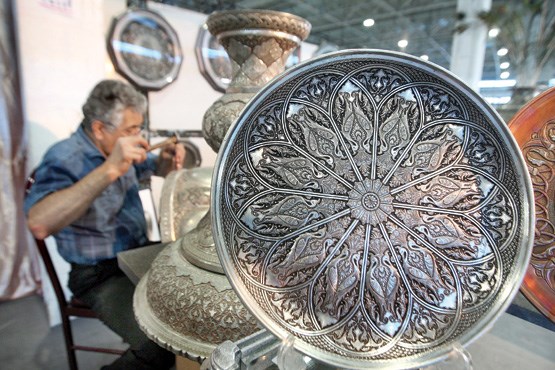
MOLD MAKING
According to the given explanations, in order to make patterns on emboss worked-tablecloths Wooden molds or seals are used. Such molds are made of hawthorn wood and pear tree, which is called mold making. The number of manufacture of these molds depends on the main colors of the case. Tallow is added to prevent drying and cracking of these molds.
THE BEST EMBOSS WORKED-TABLECLOTHS
IRAN ART EXHIBITION: High sales of emboss worked-tablecloths due to high quality, in addition to domestic sales, even its export is conducted.
THE PROCESS OF PRODUCING EMBOSS WORKED-TABLECLOTHS
1. In the first stage, they put it in the river for five days in order to remove the sludge and remove the waste material.
2. In the second stage, the craftsman dyes the fabric with pomegranate peel to obtain a pea background.
3. In the third stage, they start printing patterns on the fabric using wooden molds which have their own special colors.
4. In the art of emboss working, six colors are used: red, blue, yellow, black, green and brown straw.
5. In the next step, red and black colors are used to be painted on the fabric and it is rinsed in water for 2-3 hours so that the extra color comes out of the fabric and becomes uniform and then it is ready to stabilize the color.
6. At this stage, they throw it in a pot of boiling water and add the rhubarb kernel and crushed pomegranate peel to the boiling water to stabilize the color of the fabric so that the colors of the fabric are stabilized after boiling.
7. In the semi-final stage, they put the tablecloths in the open air to dry completely, and they start troweling and rooting the tablecloth for more beauty.
8. In the final stage, the tablecloths are presented to tablecloth applicants and the market.
